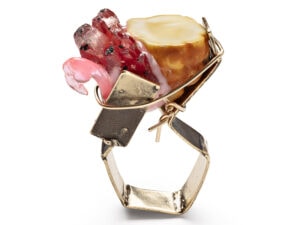
Susan Cummins: How long have you been doing the graduate show at your gallery?
Marie-José van den Hout: I began organizing the graduate show in 1987, when the gallery was still in the building on Ganzenheuvel. I started by showing graduate work from the departments of silversmithing, 3D design, and jewelry from only a few Dutch academies: Gerrit Rietveld Academy in Amsterdam, Academie voor Beeldende Kunsten in Arnhem, and Maastricht’s Stadsacademie voor Toegepaste Kunsten. The exhibition has now grown into a major event and this year we are showing jewelry and some vessels by 74 students from 33 schools in 18 countries around the world.
Who received your Marzee prize this year? Where are they from?
Marie-José van den Hout: This year six graduates were awarded the Marzee Graduate Prize 2014. Their work really stood out to all of us here at Galerie Marzee, and we look forward to seeing how their work continues to develop as they begin their careers in the field of contemporary jewelry. As Marzee Graduate Prize winners, they will each be invited to participate in a workshop, Atelier Ravary, at the Ravary Estate in Belgium.
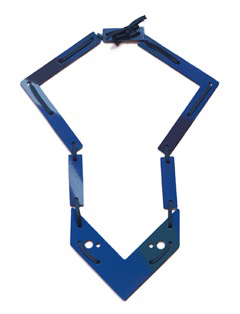
Susan Cummins: How long have you been doing the graduate show at your gallery?
Marie-José van den Hout: I began organizing the graduate show in 1987, when the gallery was still in the building on Ganzenheuvel. I started by showing graduate work from the departments of silversmithing, 3D design, and jewelry from only a few Dutch academies: Gerrit Rietveld Academy in Amsterdam, Academie voor Beeldende Kunsten in Arnhem, and Maastricht’s Stadsacademie voor Toegepaste Kunsten. The exhibition has now grown into a major event and this year we are showing jewelry and some vessels by 74 students from 33 schools in 18 countries around the world.
Who received your Marzee prize this year? Where are they from?
Marie-José van den Hout: This year six graduates were awarded the Marzee Graduate Prize 2014. Their work really stood out to all of us here at Galerie Marzee, and we look forward to seeing how their work continues to develop as they begin their careers in the field of contemporary jewelry. As Marzee Graduate Prize winners, they will each be invited to participate in a workshop, Atelier Ravary, at the Ravary Estate in Belgium.
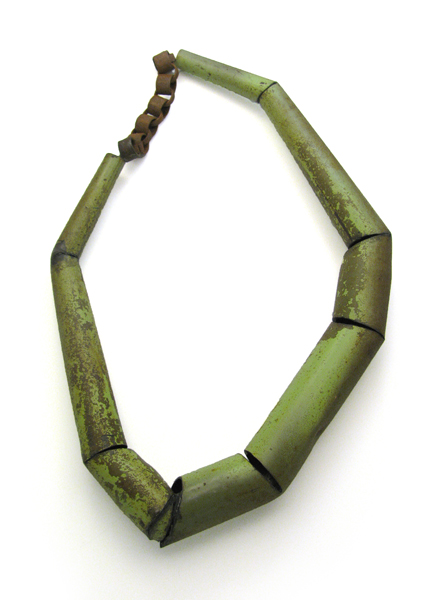
Vera Aldejohann (BA)
FH D (Fachhochschule Düsseldorf), Dusseldorf, Germany
Sophie Baumgärtner
Burg Giebichenstein Hochschule Halle, Halle a.d. Saale, Germany
EunJi Choi (MFA)
Cranbrook Academy of Art, Bloomfield Hills, U.S.A.
Katie Collins (BA)
RMIT (Royal Melbourne Institute of Technology), Melbourne, Australia
Li Liang (MA)
HDK (Högskolan för Design och Kunsthantverk), Gothenburg, Sweden
Ayano Takahashi
Hiko Mizuno College of Jewelry, Tokyo, Japan
What schools are showing the strongest work?
Marie-José van den Hout: It’s hard to say. In general, the work from Escola Massana (Barcelona), Burg Giebichenstein (Halle a.d. Saale), Fachhochschule Trier (Idar-Oberstein), Akademie der Bildenden Künste (Munich), Kookmin University (Seoul), and Eesti Kunstiakadeemia (Tallinn) is well made and strong. It’s the individual artist, however, who makes the strongest work. My team and I believe the six prizewinners show the strongest work.
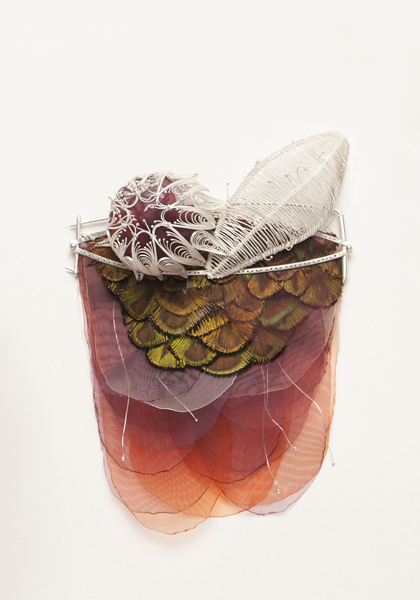
Besides giving these awards, what else do you do with the work or the artists in this show?
Marie-José van den Hout: I believe the new generation of jewelry designers or jewelry artists should have a platform to start developing their careers. That’s why I organize this show. An image of one piece by each participant will be published on our website and sent all over the world through press releases and newsletters. The work will be printed in our Marzee Magazine, which we send to international museums and collectors, among others. After the graduate show we usually exhibit a selection of the work at the PAN, an important art fair in Amsterdam, and at Frame, part of Schmuck in Munich.
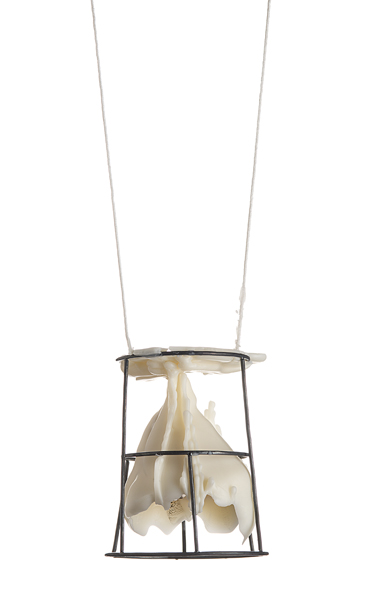
Marie-José van den Hout: Yes, after the graduate show we often start working with some of the artists and promote their work in order to support their development. Julie Mollenhauer, Annelies Planteijdt, and Lucy Sarneel first showed their work as graduates from Gerrit Rietveld Academy. They were a few of the first artists when I started the graduate show. Also younger, well-known, and promising artists like Antje Bräuer, Iris Bodemer, Ute Eitzenhöfer, and Afke Golsteijn (from the artistic partnership called Idiots) started their careers in one of the Marzee graduate shows.
Usually how many schools are represented each year?
Marie-José van den Hout: Usually somewhere between 25 and 35, although last year we showed work from 39 different institutions.
Who do you invite? What are your criteria?
Marie-José van den Hout: We invite graduates from academies and schools from all over the world. We make our selection based on the quality of the piece: how a piece is made, if it’s wearable (although wearability is such a relative term!), and if the concept and design are strong and good.
We contact the various international schools and request images of work from them. Following that, we select work and invite graduates to participate. There is a lot of differentiating, looking at visual information, and making inferences. Selecting work represented by images alone is especially difficult because so much of the tactility and physical presence is lost. Therefore some of the academies first send images and after that we ask a number of the students to come to the gallery and show their pieces. Seeing the work in the flesh really is the best way to select.
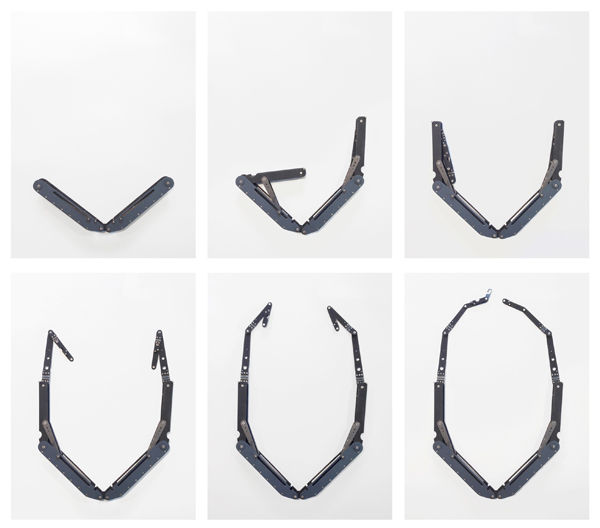
Marie-José van den Hout: I visit as many colleges and academies and graduation shows as I can, and during these visits I select work. Every year the majority of graduate shows start in June and end in July. The Marzee Graduate Show opens in the second week of August, so there is very little time to visit and select and organize our exhibition. This year I visited the shows at Alchimia in Florence, the Rietveld Academy in Amsterdam, and ArtEZ in Arnhem. In Belgium I went to Antwerp to see the shows at the Academy of Fine Arts and Saint Lucas University College of Art & Design, and to the MAD show in Hasselt. After that I travelled to see the graduate shows in Pforzheim and Halle. Usually I travel to London and go to New Designers and the RCA show.
Wow. Do you mean that you travel to all those schools every year? That is quite a travel schedule! Who puts it together for you?
Marie-José van den Hout: My great Marzee team.
Have you noticed any new materials or ideas cropping up in this year’s group?
Marie-José van den Hout: This year’s work seems to be more introverted and poetic. Classic and natural materials like silver, steel, wood, and copper seem to be more popular, and the size of the pieces has become smaller, relatively speaking.
Can you think back to the first one of these shows and describe the kind of exciting work then, and then compare it to this year’s show?
Marie-José van den Hout: Every year I feel there is new, strong, and exciting work in the show. Every year the work is developing and changing in all the fields and disciplines that jewelry is “part” of—fashion, design, sculpture, painting, installation, graphic design—and every year there are new visions and ideas about adornment and materials, things like 3D printing, found objects, mechanical parts, and the use of semiprecious materials.
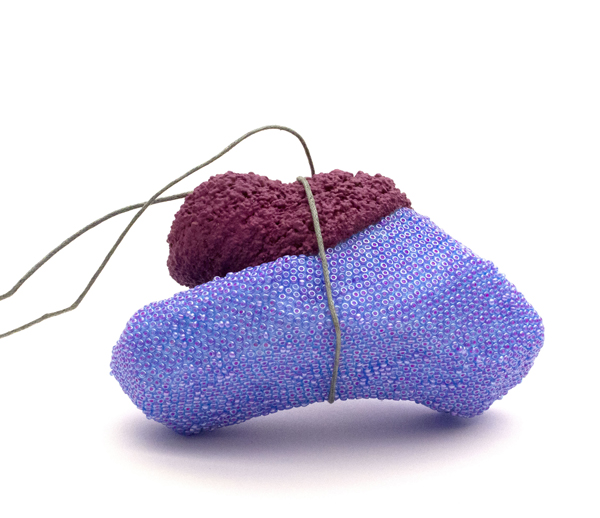
How successful are the sales at these shows?
Marie-José van den Hout: Most work in these shows is difficult to sell. The artists are young, no one knows them yet, and they need to prove they’ll be able to go on working and developing their practice. A lot of work is the outcome of a year of examining and searching for the edge, and in general not very easy to wear.
Why do you put on these shows?
Marie-José van den Hout: These young artists need to have a platform, and art jewelry or contemporary jewelry still needs to be promoted.
Is there a future in the contemporary jewelry market for these young people?
Marie-José van den Hout: Yes, for some there certainly is.
Thank you.




